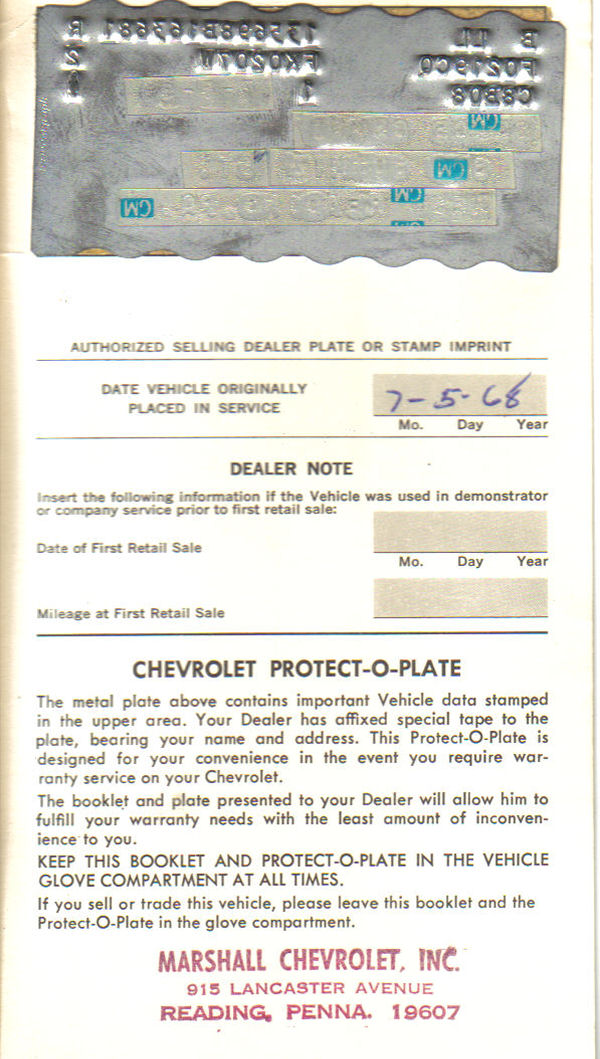1968 El Camino Protect-O-Plate Introduction
-
The Protect-O-Plate (P-O-P) was designed to be used by Chevrolet dealers to identify the owner and the vehicle. The owner's name, address and the vehicle's delivery date was embossed on a special tape affixed to the plate.
-
The P-O-P was glued to the inside rear cover of the "Chevrolet 1968 Owner Protection Plan and New Vehicle Warranty" booklet. When warranty service was performed on a customer's car the P-O-P was stamped on the work order.
-
The P-O-P was never meant to be used as documentation the way enthusiasts today use the card. Then again, the body broadcast sheets, trim build sheets, etc. weren't meant to be used either and were more often than not discarded at the assembly plant. Likewise, the P-O-P was usually discarded when the vehicle went out of warranty or when the car was sold as warranties usually did not go to the new owner.
-
Today, the P-O-P is one of the best pieces of documentation you can have as it not only identifies the VIN but also the correct engine ID code and date of the engine, the correct transmission number and date along with the rear end gear ratio and date. Some options were also coded on the P-O-P such as power steering, power brakes, radio, air conditioning, etc.
-
Below is a Protect-O-Plate and the inside rear cover of the warranty booklet. Note the reverse imprint of the plate. A mirrored image of this plate can be found in the El Camino specific section under Fremont.
-
Beware of reproduction (fake) protect-o-plates, they can make a put-together Chevelle appear to be authentic. Sellers will even put your name on authentic-looking GM tape. Apparently it's not illegal but any fake documentation is misleading to a potential buyer and, to many Chevelle owners, unethical as well.




